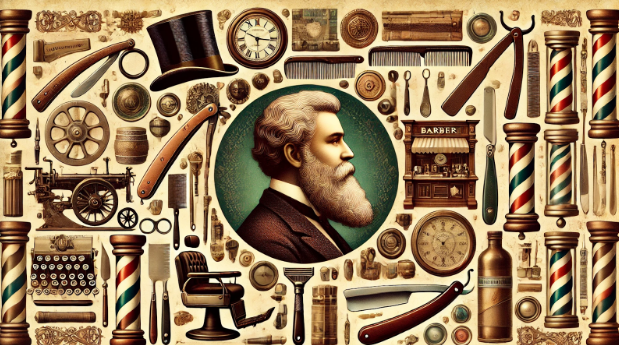Barbering, one of the world's oldest professions, has undergone a fascinating evolution over millennia. From its origins in ancient civilizations to the modern-day barbershop experience, the art of barbering has consistently adapted to cultural, social, and technological changes. In this blog, we’ll journey through time to explore the rich history and transformation of barbering.
Ancient Beginnings
The roots of barbering can be traced back to ancient Egypt around 5000 B.C. Egyptian barbers were revered figures, responsible for grooming the elites and even performing ritualistic practices. Hair and beard care were not just about aesthetics; they were also associated with religious beliefs and social status.
Barber-Surgeons of the Middle Ages
Barbering took on a more diverse role during the Middle Ages. Barbers were not only responsible for cutting hair and trimming beards but also for performing minor surgical procedures. Known as barber-surgeons, these professionals handled everything from bloodletting and tooth extractions to amputations. The iconic barber pole, with its red and white stripes, symbolizes this dual role: red for blood and white for bandages.
Renaissance and the Rise of the Modern Barber
The Renaissance period marked a significant shift in barbering. As the medical field became more specialized, barbers began to focus solely on grooming services. This era saw the establishment of the first barbers' guilds, which helped to professionalize the trade and set standards for training and practice.
Barbering in the 19th and 20th Centuries
The 19th century brought about the golden age of barbering. Barbershops became community hubs where men would gather not just for a haircut or shave but also for social interaction. The advent of the safety razor in the early 20th century revolutionized shaving practices, making it easier for men to groom themselves at home. Despite this, the barbershop remained a beloved institution, especially in the United States.
The Modern Barbershop Experience
Today, barbering has experienced a renaissance of its own. Modern barbershops combine traditional techniques with contemporary styles, creating a unique grooming experience. The resurgence of classic hairstyles and the increasing popularity of beard grooming have brought barbering back into the spotlight.
Technological Advancements and Future Trends
Technology has also left its mark on barbering. From electric clippers and advanced hair products to online booking systems and social media marketing, the profession has embraced innovation. Looking ahead, trends such as eco-friendly grooming products and virtual reality consultations are set to shape the future of barbering.
Conclusion
The evolution of barbering from ancient times to the modern day is a testament to the profession's adaptability and enduring appeal. As we continue to innovate and adapt, the art of barbering will undoubtedly remain a vital and cherished part of our cultural fabric.

